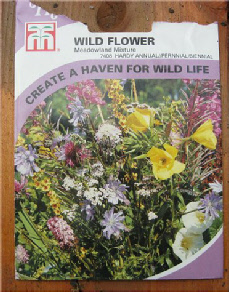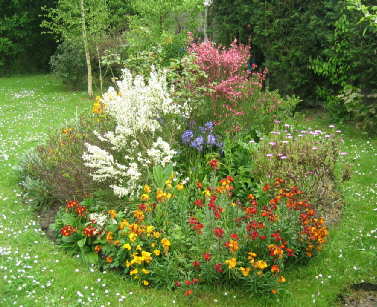Talk to Rochford Life on 0786 342 7294 or E-mail us. For numbers for shops, business etc. see page below.


Make a point of visiting us weekly! Tell a friend about us.
The Rich Tapestry of Life Page
Odds and ends that don’t fit anywhere else, information, general knowledge, light-hearted quips and quotes from all over the place that make up the ‘rich tapestry of life’ for reading in those odd moments when you have nothing else to do! On this page we ventured out with a collection about thinking about gardening. But a warning: we intended to intersperse the quotes with lovely garden pictures but came up with so many quotes we couldn’t leave out, there are hardly any pictures. Sorry!

Although I have written millions of words about gardening and made television programmes about it for a quarter of a century – I never think of gardening as an objective process. It is what I do in real life in my real garden. It is a record of failure, bewilderment and surprise, as well as endless pleasure and some success. It is about life in all its complexity, sadness and joy as much as the intricacies of horticultural technique.
I do believe that most good gardens are personal, private, domestic and above all, intimate. The measure of their goodness can be reckoned to some degree in absolute terms of design, planting or horticulture but not to any meaningful extent. The truth is that our response to gardens is invariably subjective and if they are our own, completely so. To an astonishing and powerful degree they are loved, and love cannot be reasoned or measured.
(Source: Monty Don: Gardening at Longmeadow)
I do believe that most good gardens are personal, private, domestic and above all, intimate. The measure of their goodness can be reckoned to some degree in absolute terms of design, planting or horticulture but not to any meaningful extent. The truth is that our response to gardens is invariably subjective and if they are our own, completely so. To an astonishing and powerful degree they are loved, and love cannot be reasoned or measured.
(Source: Monty Don: Gardening at Longmeadow)
Water is the easiest rooting medium of all and it’s fun to see the roots growing. You can root almost anything in water provided that you have good light. Cuttings root much faster in small bottles, perhaps because they are able to get oxygen more easily from small amounts of water. They take from one day to one month to form roots. Place a small piece of charcoal in the water to keep it from becoming slimy. Be sure to top up the water level daily, as it evaporates quickly. When roots have been formed the cuttings can be planted directly into potting soil. The only disadvantage to rooting cuttings in water is that the roots formed are much finer than those formed in vermiculite, with the result that water-rooted cuttings often suffer from shock when transferred to soil. To avoid wilting, water the cutting with a solution of vitamin B1 which is an anti-shock treatment and give it the ‘greenhouse treatment’ for a few days.
(Source: Plants from Plants)
Any soil will grow something and because of this gardeners are apt to take their soil for granted. But good soil, rich, sweet and healthy, can enable a gardener to double his crop with half the labour he would have to expend on bad soil. All soil was once rock. Rain, frost, sun, subterranean disturbance, bacteria, animals and plants have over the centuries gradually broken down the surface to form soil.
(Source: Gardeners Diary)
Any soil will grow something and because of this gardeners are apt to take their soil for granted. But good soil, rich, sweet and healthy, can enable a gardener to double his crop with half the labour he would have to expend on bad soil. All soil was once rock. Rain, frost, sun, subterranean disturbance, bacteria, animals and plants have over the centuries gradually broken down the surface to form soil.
(Source: Gardeners Diary)

A good indication of soil fertility is the colour, the structure and the visible organisms in it. Darker browns generally – though not always – indicate plenty of organic matter, while a soil which will crumble easily in the hand is also likely to be more fertile. But perhaps the best visual indication for gardeners is the quantity of earthworms. If you dig a forkful of soil and find half a dozen good healthy-looking worms, you can bet your life the soil will grow good plants. It pays to keep it that way.
(Source: Gardener’s World by Geoff Hamilton)
Watching the way a garden changes its character with the seasons is part of the joy of gardening. To get the most from your plot, it should be designed and planted to provide interest in every day of the year. Each season has its own distinctive feel and appearance, and a well-designed garden will include plants to reflect this.
(Source: The Gardener’s Manual)
Watching the way a garden changes its character with the seasons is part of the joy of gardening. To get the most from your plot, it should be designed and planted to provide interest in every day of the year. Each season has its own distinctive feel and appearance, and a well-
I want it all, the whole far-flung earth and everything in it. I want streams and hills, rivers and seas, mountains and pastures. I want a whole, happy, earth. And when I'm not being overly ambitious about my environmental desires, I also want a garden with a little bit of everything in it. These two desires are not unconnected, my happy earth will, in part (and no small part), be by my ability to grow a large percentage of my food in my garden, in a way that does not devour resources.... There are thousands of us out there that are desperate for wholesome, home-grown food, but not at the expense of our city lives..... Whether you have a balcony, a courtyard or a sprawling plot this is about saying that your garden pleases you, pleases your palette and pleases the wider environment.
(Source: Alys Fowler – The Edible Garden)
To get the best from your garden, you must first decide what you want from it and then work out how this can be achieved, bearing in mind the constraints of terrain, soil, and local climate.... The most careful planning and preparation will count for little unless complemented by practical knowledge of when the vital tasks should be undertaken.... attractive gardens are not designed to a rigid formula and there is always room for individual interpretation and even eccentricity. Some gardens are designed to shock, some are traditional in concept, a few are strictly formal and many are a compromise between formality and informality. There are as many garden styles as there are tastes, and the only criterion for success is whether the result pleases your personally.
(Source: The Complete Book of Practical Gardening)
Good gardeners are always asking questions. It is one of the best ways to learn, and seasoned practitioners are very generous in giving advice. Beginner gardeners usually find that in the process of learning more about the subject, new questions keep occurring to them. Experienced gardeners are aware that whatever knowledge they may have acquired, there is plenty about which they remain ignorant. The true experts are usually the first to admit to gaps in their knowledge. Gardening is such a huge subject that one lifetime seems scarcely enough to learn all there is to know.
The best of all ways to learn is by personal experience, but trial and error can be a costly business, not only in terms of money, but of time too. The majority of amateur gardeners (and even professional ones) acquire their knowledge in a piecemeal fashion. Reading books by trusted authorities is one way, attending a gardening course at a horticulture college is another. Talking to other gardeners is even better. If you join an allotment society or gardening club you can be sure to meet plenty of enthusiasts who are usually more than willing to pool their knowledge – no gardener is ever reluctant to answer a question, if they can. Local gardeners are often a good source of information, because they may have similar soil to yours and will know what plants thrive there.
(Source: 1001 Garden Questions Answered)
You find me sitting in my favourite sheltered corner of the garden, trying to write but getting ever so distracted by the world going by. And it's rather a busy world on this pleasantly warm spring afternoon. Out below me, a male Orange-tip butterfly is dancing around a little clump of Jack-by-the-hedge, hoping to find a mate; he's in mint condition, exquisite, and it's only the second time I've seen one in the garden. By the end of the summer, I will expect to have seen a dozen other butterfly species fluttering by.
Just beyond him at the pond, I can see Large Red Damselflies on red alert for mates, skirmishing over the lily pads. The surface of the water is wriggling with tadpoles, for frogs, toads and Smooth Newts have all bred successfully in the pond this year. Now, barely a metre away from me, Mrs Blackbird — who has become much more confiding than her mate — is rooting around in the flower border, looking for nesting materials, a big wad of leaves and moss already clamped in her bill.
And that's just for starters; every day there is something to marvel at as nature goes about its business. It's not as if I have a great sprawling country estate — I live in the suburbs and have a back garden just six metres wide by five deep. But even in this very modest space, watching the wildlife is an immense pleasure, I'm sure it is the same with you.
(Source: RSPB Gardening for Wildlife)
Growing your own food is compulsive. Despite being responsible for a large country estate, where everything from laying boundary hedges and pollarding riverside willows to deadheading rhododendrons and sowing summer bedding needs to be done at some time or other, my heart is in the kitchen garden. You will find me there first thing in the morning, quietly checking all is well. And at dusk as we make our way back to the tool shed, it is there among the vegetables, fruit and herbs that I am tempted to linger until it is too dark to see. There are many reasons for this irresistible appeal of kitchen gardening. It has something to do with the creative need to work the soil with your own hands, care for the plants yourself, and finally gather in produce fresher than any you can buy. Perhaps there is even a little of the pioneering spirit that drives people everywhere to tame a patch of wilderness, and substitute disciplined rows of crop plants as evidence that it is still possible to produce at least part of one's basic necessities. Whatever the motivation, it is hard to exaggerate the difference between tired shop produce and fresh home-grown lettuces that burst with flavour, young beans and juicy carrots so crisp that they snap almost at a touch, ripe fragrant melons still warm from the afternoon sun, and herbs that perfume the air and your hands with their lingering aromatic oils.
(Source: Your Kitchen Garden Month by Month)
Our native wildflowers are in decline, and none more so than our meadow grassland plants. Over the past century, we've destroyed more of our wildflower-rich hay meadows than any other habitat. Some have been sprayed and re-sown with more productive silage grasses, while others have been turned over to arable farming. It's estimated that, between 1930 and 1984, 97 per cent of lowland semi-natural grassland in England and Wales disappeared, with the surviving meadows now fragmented and, in many cases, degraded. It's a tragedy for us - for the loss of beauty and diversity of our countryside - but it's a catastrophe for our native pollinators, who rely on these plants for their life cycle, habitat and food. So it's not surprising that, with this dramatic transformation of the British countryside, pollinator numbers have been falling across the board. So, in addition to growing more nectar-rich garden plants, it's vital that as many of us as possible find room for a few native wildflowers. One way of doing this is to create a mini wildflower meadow.
(Source: Sarah Raven in Gardeners’ World magazine)
Top of page
To get the best from your garden, you must first decide what you want from it and then work out how this can be achieved, bearing in mind the constraints of terrain, soil, and local climate.... The most careful planning and preparation will count for little unless complemented by practical knowledge of when the vital tasks should be undertaken.... attractive gardens are not designed to a rigid formula and there is always room for individual interpretation and even eccentricity. Some gardens are designed to shock, some are traditional in concept, a few are strictly formal and many are a compromise between formality and informality. There are as many garden styles as there are tastes, and the only criterion for success is whether the result pleases your personally.
(Source: The Complete Book of Practical Gardening)
Good gardeners are always asking questions. It is one of the best ways to learn, and seasoned practitioners are very generous in giving advice. Beginner gardeners usually find that in the process of learning more about the subject, new questions keep occurring to them. Experienced gardeners are aware that whatever knowledge they may have acquired, there is plenty about which they remain ignorant. The true experts are usually the first to admit to gaps in their knowledge. Gardening is such a huge subject that one lifetime seems scarcely enough to learn all there is to know.
The best of all ways to learn is by personal experience, but trial and error can be a costly business, not only in terms of money, but of time too. The majority of amateur gardeners (and even professional ones) acquire their knowledge in a piecemeal fashion. Reading books by trusted authorities is one way, attending a gardening course at a horticulture college is another. Talking to other gardeners is even better. If you join an allotment society or gardening club you can be sure to meet plenty of enthusiasts who are usually more than willing to pool their knowledge – no gardener is ever reluctant to answer a question, if they can. Local gardeners are often a good source of information, because they may have similar soil to yours and will know what plants thrive there.
(Source: 1001 Garden Questions Answered)
You find me sitting in my favourite sheltered corner of the garden, trying to write but getting ever so distracted by the world going by. And it's rather a busy world on this pleasantly warm spring afternoon. Out below me, a male Orange-
And that's just for starters; every day there is something to marvel at as nature goes about its business. It's not as if I have a great sprawling country estate — I live in the suburbs and have a back garden just six metres wide by five deep. But even in this very modest space, watching the wildlife is an immense pleasure, I'm sure it is the same with you.
(Source: RSPB Gardening for Wildlife)
Growing your own food is compulsive. Despite being responsible for a large country estate, where everything from laying boundary hedges and pollarding riverside willows to deadheading rhododendrons and sowing summer bedding needs to be done at some time or other, my heart is in the kitchen garden. You will find me there first thing in the morning, quietly checking all is well. And at dusk as we make our way back to the tool shed, it is there among the vegetables, fruit and herbs that I am tempted to linger until it is too dark to see. There are many reasons for this irresistible appeal of kitchen gardening. It has something to do with the creative need to work the soil with your own hands, care for the plants yourself, and finally gather in produce fresher than any you can buy. Perhaps there is even a little of the pioneering spirit that drives people everywhere to tame a patch of wilderness, and substitute disciplined rows of crop plants as evidence that it is still possible to produce at least part of one's basic necessities. Whatever the motivation, it is hard to exaggerate the difference between tired shop produce and fresh home-
Our native wildflowers are in decline, and none more so than our meadow grassland plants. Over the past century, we've destroyed more of our wildflower-
Top of page